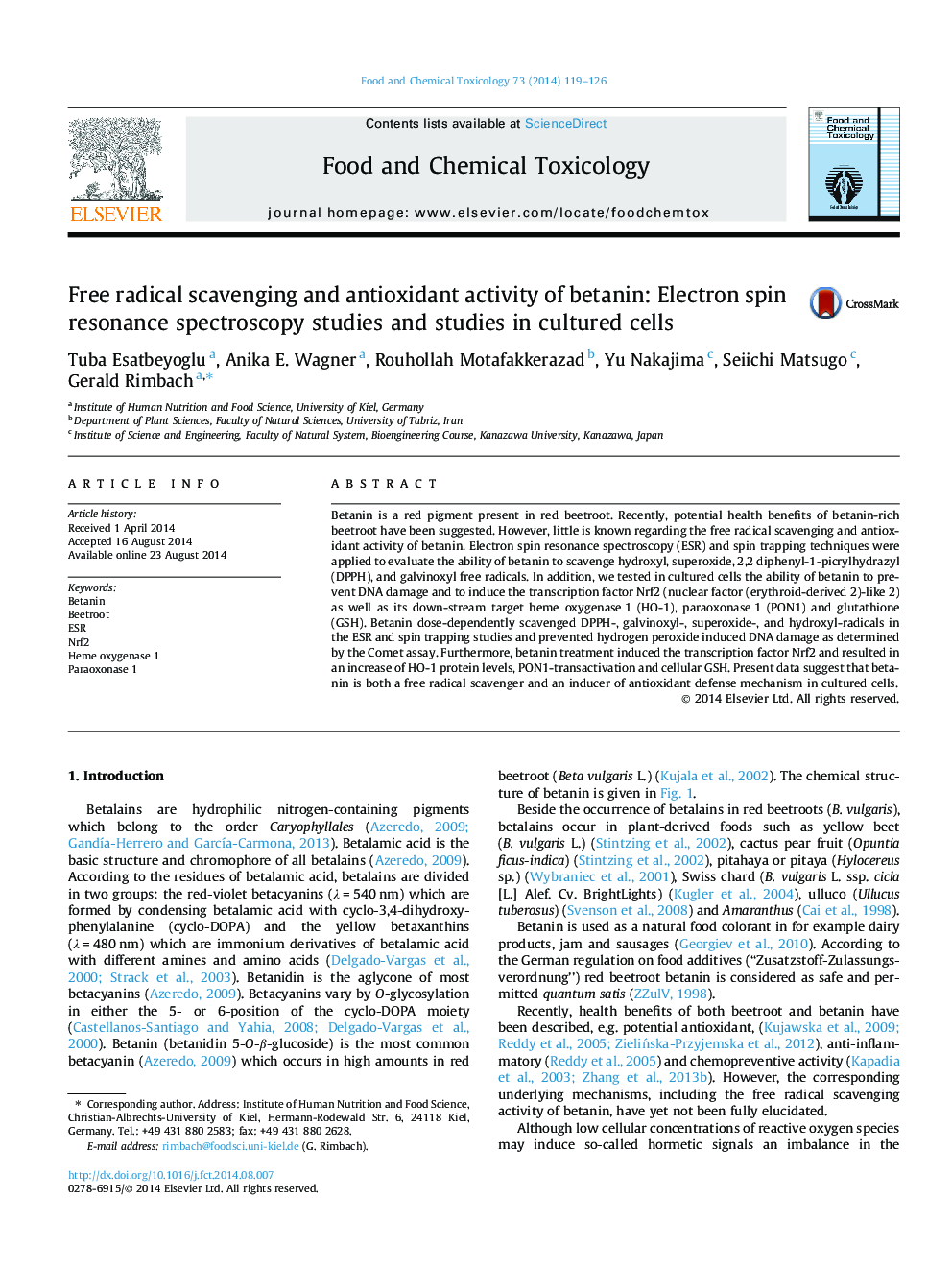| Article ID | Journal | Published Year | Pages | File Type |
|---|---|---|---|---|
| 5850059 | Food and Chemical Toxicology | 2014 | 8 Pages |
â¢Betanin is a free radical scavenger.â¢Betanin enhances endogenous cellular antioxidant defense mechanism via induction of Nrf2, heme oxygenase 1, paraoxonase 1 and glutathione.â¢Betanin protects DNA against reactive oxygen species.
Betanin is a red pigment present in red beetroot. Recently, potential health benefits of betanin-rich beetroot have been suggested. However, little is known regarding the free radical scavenging and antioxidant activity of betanin. Electron spin resonance spectroscopy (ESR) and spin trapping techniques were applied to evaluate the ability of betanin to scavenge hydroxyl, superoxide, 2,2 diphenyl-1-picrylhydrazyl (DPPH), and galvinoxyl free radicals. In addition, we tested in cultured cells the ability of betanin to prevent DNA damage and to induce the transcription factor Nrf2 (nuclear factor (erythroid-derived 2)-like 2) as well as its down-stream target heme oxygenase 1 (HO-1), paraoxonase 1 (PON1) and glutathione (GSH). Betanin dose-dependently scavenged DPPH-, galvinoxyl-, superoxide-, and hydroxyl-radicals in the ESR and spin trapping studies and prevented hydrogen peroxide induced DNA damage as determined by the Comet assay. Furthermore, betanin treatment induced the transcription factor Nrf2 and resulted in an increase of HO-1 protein levels, PON1-transactivation and cellular GSH. Present data suggest that betanin is both a free radical scavenger and an inducer of antioxidant defense mechanism in cultured cells.
